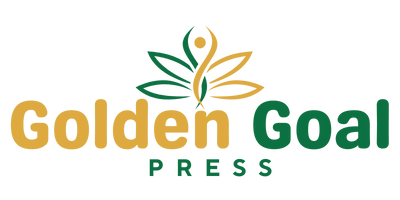High cholesterol is a silent condition. You can’t see it or feel it, but over time, it can silently damage your heart and blood vessels. The good news? Your kitchen holds some powerful weapons against it. Certain foods can help reduce your cholesterol levels quickly and naturally. Let’s explore these cholesterol-busting foods in a simple, easy-to-follow way.
What Is Cholesterol and Why Should You Care?
Cholesterol is a waxy substance found in your blood. Your body actually needs it to build healthy cells. However, when you have too much “bad” LDL cholesterol and not enough “good” HDL cholesterol, it can lead to heart disease, heart attacks, and strokes.
You get cholesterol in two ways:
- Your body – mainly your liver makes it.
- The food you eat – especially animal products like meat, cheese, and eggs.
The goal is not to get rid of cholesterol completely but to balance it. And food is one of the fastest ways to do that.
10 Powerful Foods That Help Reduce Cholesterol Levels Fast
Here are the top foods proven by science to help lower cholesterol levels, especially when added to a healthy lifestyle.
1. Oats
Start your day with a bowl of oatmeal, and you’re already making a smart move.
Oats are full of soluble fiber, especially beta-glucan, which acts like a sponge in your digestive system. It soaks up cholesterol and removes it before it enters your bloodstream.
Try this: Oatmeal with sliced bananas and a sprinkle of cinnamon.
2. Avocados
Avocados are more than trendy—they’re heart heroes. Rich in monounsaturated fats, they help raise good cholesterol (HDL) and lower bad cholesterol (LDL).
Fun fact: Eating one avocado a day has been shown to significantly reduce LDL levels
3. Fatty Fish (like Salmon, Mackerel, and Sardines)
These fish are loaded with omega-3 fatty acids, which reduce triglycerides (a type of fat in your blood), lower LDL, and boost HDL.
Aim to eat fatty fish at least 2 times a week.
4. Nuts (Almonds, Walnuts, Pistachios)
Nuts are a delicious, cholesterol-fighting snack. They’re high in good fats, fiber, and plant sterols that block cholesterol absorption.
A handful a day is enough—nuts are healthy but calorie-dense.
5. Beans and Lentils
Legumes are rich in soluble fiber, which lowers LDL cholesterol. Plus, they’re a great plant-based protein source.
Add black beans to your salad or make a hearty lentil soup.
6. Fruits High in Pectin (Apples, Grapes, Citrus Fruits, Berries)
Pectin is a type of fiber that binds with cholesterol in the gut and helps flush it out. These fruits are tasty and full of antioxidants too.
Snack idea: An apple with a tablespoon of almond buttr.
7. Vegetable Oils (Olive Oil, Canola Oil, Sunflower Oil)
Replacing butter or lard with vegetable oils helps lower LDL. Extra virgin olive oil is especially powerful thanks to its antioxidants.
Drizzle olive oil on salads or use it to sauté vegetables.
8. Soy Products (Tofu, Soy Milk, Edamame)
Soy is rich in isoflavones, which help reduce cholesterol, especially if you’re replacing red meat with it.
Soy burger, anyone? Or try grilled tofu in a stir-fry
9. Dark Leafy Greens (Spinach, Kale, Collard Greens)
These greens contain lutein, which not only protects against eye disease but also prevents cholesterol from sticking to artery walls.
Throw some spinach in your smoothie or stir it into pasta.
10. Green Tea
Green tea contains catechins, natural compounds that reduce cholesterol production and increase fat burning.
Swap your afternoon coffee for green tea.
Foods to Avoid (They Work Against You)
Just as some foods help, others hurt. Try to cut back on:
- Fried foods
- Red and processed meats
- Full-fat dairy products
- Baked goods made with trans fats
- Sugary drinks
These foods raise your LDL and lower your HDL—exactly what we don’t want.
Simple Lifestyle Tips That Work With Food
Eating the right foods is a huge step, but combining them with healthy habits gives you even faster results:
- Move more: Aim for 30 minutes of exercise most days.
- Stop smoking: It raises your HDL and improves your heart health.
- Lose weight: Even losing 5-10% of your body weight can make a big difference.
- Limit alcohol: Too much can increase cholesterol and triglycerides.
How Fast Can Food Lower Cholesterol?
It varies from person to person. Some people see improvements in as little as 4 to 6 weeks after changing their diet. For others, it might take a few months. The key is consistency. Make these foods part of your everyday meals—not just a short-term fix.
Final Thoughts
Reducing cholesterol doesn’t mean giving up flavor or joy in eating. In fact, many of the best cholesterol-lowering foods are delicious, satisfying, and natural.
Instead of focusing on what you can’t eat, try celebrating all the amazing, heart-healthy foods you can enjoy. You’ll feel better, protect your heart, and possibly avoid medications or reduce your need for them.
FAQs About Lowering Cholesterol Through Food
1. Can I lower cholesterol without medication?
Yes. Many people can lower their cholesterol significantly through diet, exercise, and lifestyle changes alone. However, some may still need medication depending on their risk factors and genetics.
2. How long does it take for food to affect cholesterol levels?
You might see a change in your cholesterol levels within 4 to 8 weeks of improving your diet, but long-term habits are key.
3. Is all fat bad for cholesterol?
No. Healthy fats like those in avocados, nuts, and olive oil actually help lower bad cholesterol. It’s the trans fats and saturated fats you want to limit.
4. What’s the worst food for high cholesterol?
Foods high in trans fats and saturated fats, like fried foods, fatty meats, and processed snacks, are the worst offenders.
5. Do eggs raise cholesterol?
Eggs do contain cholesterol, but for most people, they don’t significantly raise blood cholesterol levels. Moderation is key—1 egg a day is generally safe for healthy individuals.

